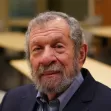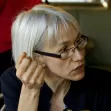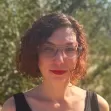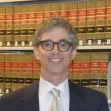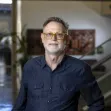Universal Design

How Public Spaces Exclude Teen Girls
Adolescent girls face unique challenges and concerns when navigating public spaces. We can design cities with their needs in mind.

How Infrastructure Shapes Public Trust
A city engineer argues that planners must go beyond code compliance to ensure public infrastructure is truly accessible to all users.

How to Protect Pedestrians With Disabilities
Public agencies don’t track traffic deaths and injuries involving disabled people, leaving a gap in data to guide safety interventions.

America’s 15 Most Accessible Cities
These cities are the easiest to navigate for people in wheelchairs or with mobility challenges.

Opinion: ‘Floating’ Bus Stops Endanger Blind Pedestrians
A design that places bike lanes between bus stops and sidewalks complicates mobility for pedestrians, especially people with vision impairments.

How Zoning Reform can Help Seniors ‘Age in Place’
Without more middle housing options, the United States will be short on ‘aging-ready’ homes.

How to Make Documents More Accessible With Color Contrast
There are many ways planners can be more accessible in their work. This article will briefly touch on color contrast as one of the ways to improve accessibility in planning documents.

How Urban Design Fails Families
For parents of small children, amenities like public restrooms or shady parks can vastly improve—or deteriorate—the experience of navigating cities.

New York Subway Begins Accessibility Improvements
The MTA is putting its effort to improve the system’s century-old stations to make them more universally accessible in high gear, adding elevators, boarding upgrades, and mechanical improvements.

ADA Compliance Slowly Makes Headway
Decades of advocacy are paying off, but it often takes legal action to force cities to make accessibility improvements mandated by the Americans with Disabilities Act over thirty years ago.

A Child’s Eye View of the City
A new VR tool invites urban planners to viscerally understand how a small child experiences the urban realm—with less-than-ideal results.

Universal Design in D.C.’s Rock Creek Park
After being closed to cars during the pandemic, Rock Creek Park’s Beach Drive has become a haven for people with mobility impairments.

How Urban Design and Infrastructure Affects Public Health and Dignity
Poor infrastructure can have powerful impacts on how different groups access resources and experience the public realm.

New Orleans Facing ADA Lawsuit for State of Sidewalks and Lack of Curb Cuts
The city of New Orleans' compliance with Americans With Disabilities Act compliance is too little, too late, according to the plaintiffs in a new lawsuit.

'Pedestrians First' Measures Walkability for Babies, Toddlers, Caregivers, Everyone
The ITDP's new Pedestrians First tool describes why and how to improve walking conditions, and provides comprehensive analysis of walkability for 1000 cities.

The ADA Turned 30, but Universal Accessibility Still Far From the Reality
While many cities have shown efforts to implement accessible design since the 1990 adoption of the American Disabilities Act, more must be done.

A Guide to Universal Design in the Public Realm
New universal design guidelines go a step beyond complete streets.
How Would Losing Your Sight Change Your Approach to Design?
Alison Prato speaks with architect Chris Downey, who lost his eyesight five years ago following surgery to remove a brain tumor, about how his approach to design and his experience of the city have changed.
Does Vancouver Ban Herald the Death of the Doorknob?
Amendments to Vancouver's building code adopted in September will require lever handles on all doors in newly built housing beginning next March. Could such code changes soon be adopted far and wide?
Old-Age Adaptation: Our Next Great Urban Challenge
Americans are living longer and changing the demographic profiles of our cities in the process. Planners are just beginning to understand how our streets and systems must adapt to accommodate this trend.
Pagination
Urban Design for Planners 1: Software Tools
This six-course series explores essential urban design concepts using open source software and equips planners with the tools they need to participate fully in the urban design process.
Planning for Universal Design
Learn the tools for implementing Universal Design in planning regulations.
Caltrans
City of Fort Worth
Mpact (founded as Rail~Volution)
City of Camden Redevelopment Agency
City of Astoria
City of Portland
City of Laramie


























